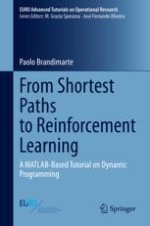2021 | OriginalPaper | Buchkapitel
7. Approximate Dynamic Programming and Reinforcement Learning for Continuous States
verfasst von : Paolo Brandimarte
Erschienen in: From Shortest Paths to Reinforcement Learning
Aktivieren Sie unsere intelligente Suche, um passende Fachinhalte oder Patente zu finden.
Wählen Sie Textabschnitte aus um mit Künstlicher Intelligenz passenden Patente zu finden. powered by
Markieren Sie Textabschnitte, um KI-gestützt weitere passende Inhalte zu finden. powered by
